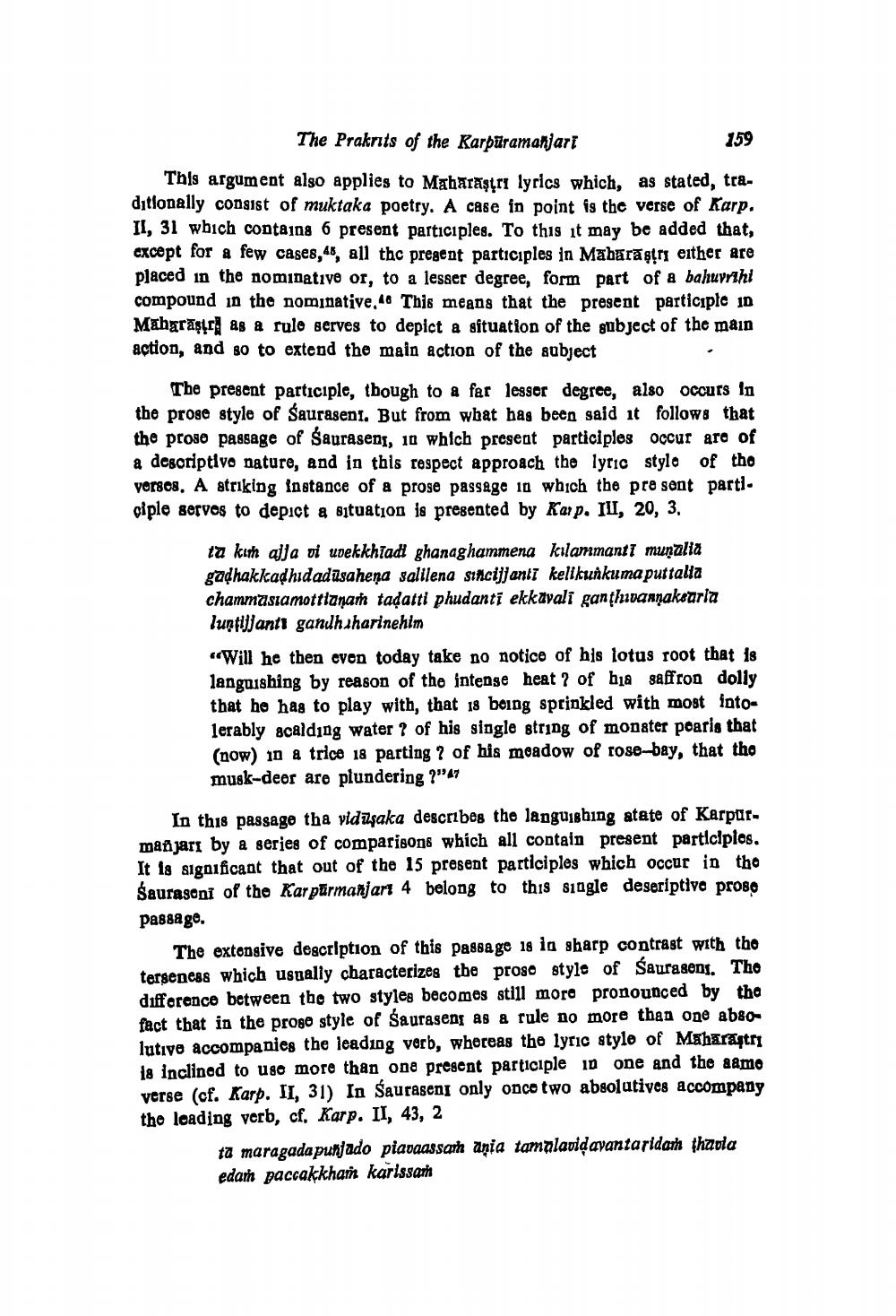________________
The Prakrits of the Karpuramanjari
159
This argument also applies to Maharastri lyrics which, as stated, traditionally consist of muktaka poetry. A case in point is the verse of Karp. II, 31 which contains 6 present participles. To this it may be added that, except for a few cases, 45, all the present participles in Maharastri either are placed in the nominative or, to a lesser degree, form part of a bahuvrihi compound in the nominative. This means that the present participle in Maharastr as a rule serves to depict a situation of the subject of the main action, and so to extend the main action of the subject
The present participle, though to a far lesser degree, also occurs in the prose style of Saurasent. But from what has been said it follows that the prose passage of Sauraseny, in which present participles occur are of a descriptive nature, and in this respect approach the lyric style of the verses. A striking Instance of a prose passage in which the pre sent participle serves to depict a situation is presented by Karp. III, 20, 3,
ta kim ajja vi uvekkhiadi ghanaghammena kilammanti muṇalia gadhakkadhidadusahena salilena sincijjanti kelikunkuma puttalla chammasiamottlanam taḍatti phudanti ekkavali ganthivannakearia luntijjanti gandhiharinehim
"Will he then even today take no notice of his lotus root that is languishing by reason of the intense heat? of hia saffron dolly that he has to play with, that is being sprinkled with most intolerably scalding water? of his single string of monster pearls that (now) in a trice 18 parting ? of his meadow of rose-bay, that the musk-deer are plundering ?"47
In this passage tha vidusaka describes the languishing atate of Karpurmañjarī by a series of comparisons which all contain present participles. It is significant that out of the 15 present participles which occur in the Sauraseni of the Karpurmanjart 4 belong to this single deseriptive prose passage.
The extensive description of this passage is in sharp contrast with the terseness which usually characterizes the prose style of Saurasens. The difference between the two styles becomes still more pronounced by the fact that in the prose style of Sauraseny as a rule no more than one absolutive accompanies the leading verb, whereas the lyric style of Maharastri one and the same is inclined to use more than one present participle in verse (cf. Karp. II, 31) In Saurasens only once two absolutives accompany the leading verb, cf. Karp. II, 43, 2
ta maragadapunjado plavaassam ania tamalaviḍavantaridam thaola edam paccakkham karissam




